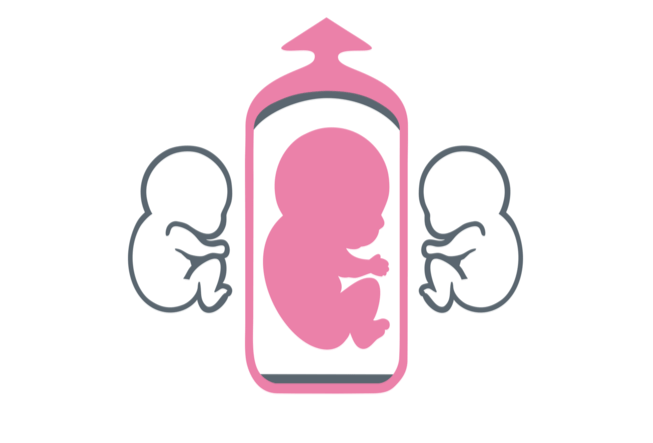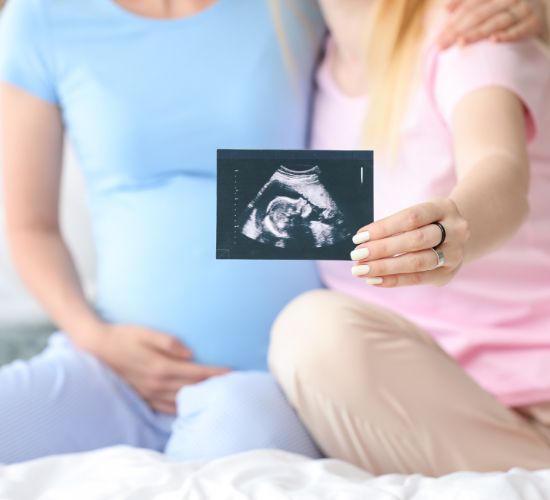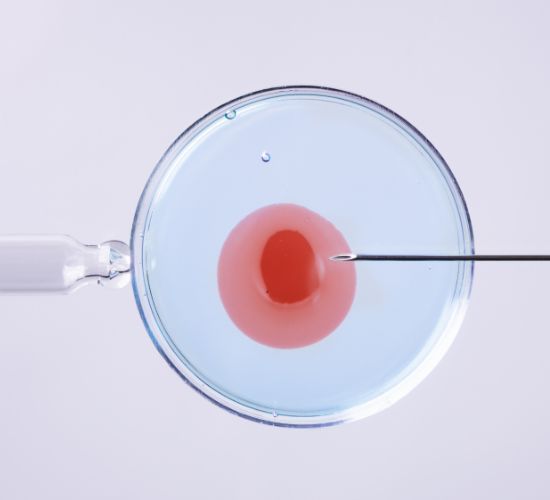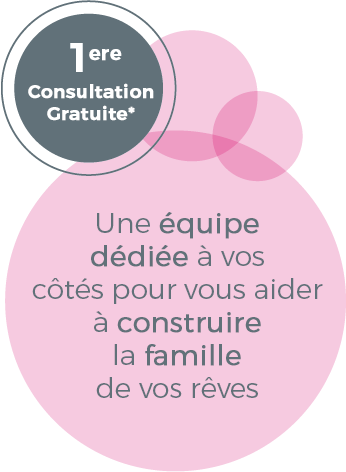Ropa
Method

ROPA METHOD
What is it?
The ROPA (Reception of Oocytes from Partner) method is a specific technique of shared motherhood for female couples, which is less well known because it is a new technique and because it is only carried out and legal in a few countries. It is a special type of IVF that allows the treatment to be shared between the two women in the couple. One of them provides the oocytes, while the other provides the uterus and carries the pregnancy.
Hand-in-hand with the best medical team and the best technology
ROPA METHOD
Who is it for?
The options that assisted reproduction offers female couples to achieve pregnancy are exactly the same as any other woman, thanks to the use of a donor’s sperm. Additionally, in cases where there is some circumstance that prevents the use of eggs from both women in the couple, there is the possibility of using donated oocytes or embryos.
Since, by law, the donation of eggs must be anonymous, in Spain the ROPA method is only allowed for female couples who are married or in a legal partnership, as it is considered a legal exception.
Law 14/2006 on Assisted Reproduction was amended to specifically recognise that both mothers are parents of the child born through assisted reproduction techniques, whether they have undergone the treatment for medical reasons or by choice.

WE ARE
VIDA
ROPA METHOD
What does the process involve?
First visit:
An ultrasound study is performed in the first few days after menstruation.


Ovarian stimulation:
The woman who is going to provide the oocytes is administered sufficient subcutaneous hormone doses to achieve the development of an ideal number of follicles/eggs. This requires regular ultrasound and/or laboratory tests.
Induction of oocyte maturation:
Once adequate follicular development has been observed, a final medication is administered that causes the oocytes to mature.


Follicular puncture and oocyte extraction:
This consists of the puncture and aspiration of the follicles via the vagina to extract the eggs. It is performed in our own clinic under completely aseptic conditions, with ultrasound monitoring and under sedation, so that it is completely painless.
Semen donor:
The donor’s semen sample is activated using a simple semen capacitation technique to select the best motile spermatozoa.
Fertilisation:
After extracting all the oocytes, the mature ones are selected and prepared in the laboratory and then fertilised, either by means of conventional IVF or ICSI, with the semen of the partner or a donor.
Embryo culture and development:
24 hours after fertilisation, a check is made to see how many eggs have been fertilised (zygotes), and they are kept in culture in an EmbryoScope Plus® incubator that creates the ideal conditions for embryo development without the need to remove them thanks to the Time-Lapse control system (taking a photo of each embryo every few minutes).
Endometrial preparation of the woman who is going to receive the embryos:
During the period of ovarian stimulation of the woman providing the oocytes, the partner who will carry the pregnancy undergoes treatment to prepare her endometrium for implantation on the day the embryo transfer is to be carried out. It is a simple treatment involving the administration of oestrogen to achieve endometrial development and then progesterone to open the window of implantation (the period of time in which the endometrium is receptive to embryo implantation).
Embryo transfer:
On days 5–6 post-fertilisation, the embryos that have developed correctly reach the blastocyst stage. At this point, the best embryo is selected to be placed in the uterus of the woman who is going to carry the pregnancy and whose endometrium has been prepared beforehand. The transfer is carried out with ultrasound guidance using a fine cannula in a completely painless procedure that allows the embryo to be deposited inside the uterus without damaging the endometrium.
Vitrification of unused embryos:
If more embryos have been obtained (which is usually the case) they are vitrified (frozen), which will allow us to use them to try to achieve new pregnancies without having to carry out all the previous steps.
Luteal phase treatment and pregnancy monitoring:
After the embryo transfer, a period of relative rest is recommended for 24–48 hours. The patient can then lead a completely normal life. Supplementation with oral or vaginal progesterone is usually administered to facilitate embryo implantation and a blood pregnancy test is performed after 14 days.
We have helped create more than
100,000 lives

ROPA METHOD
How effective is it?
It tends to be more successful than conventional IVF/ICSI techniques, because it is carried out on women who in most cases do not have fertility problems, using donor sperm, and because it is possible to select the female partner with the best ovarian reserve.
Technological advances have allowed thousands of couples and women to fulfil their dream of becoming parents
FREE DIAGNOSIS
Request your first consultation and comprehensive diagnosis free of charge
now
WHAT DOES IT INCLUDE?
- First Consultation
- 3d Echo
- AMH
- Seminogram
- Psychological Assessment
- Nutritional Assessment
- Consultation on Results
vida
Helps you take the
first steps

Avec nous, vos rêves prennent vie
Contact
Burgos: Centro Médico Recoletas Salud
Virgen del Manzano -Calle Antonio Machado, 9
Cantabria: Avd. de los Condes s/n - Santa Cruz de Bezana
León: Calle Lope de Vega, 9
Murcia: Calle Periodista Encarna Sánchez, 26
Pamplona: Calle Isaac Albéniz 7 - Bajo
Sevilla: C. Américo Vespucio, 19
Informations légales
Vous êtes informé(e) que vos données seront traitées par l'HOSPITAL RECOLETAS DE CASTILLA LEÓN, S.L.U., qui agira en tant que responsable des données dans le but de répondre à votre demande et, le cas échéant, nous prendrons les mesures nécessaires pour y répondre, sauf mention contraire de votre part. La légitimité de ce traitement reposera sur votre consentement. Vous pourrez exercer vos droits d'accès, de rectification, de suppression, d'objection, de restriction et de portabilité conformément à la politique de protection des données, ou par écrit à l'adresse Calle Constitución 8, 1º, 47001, Valladolid, Espagne. Vous pourrez également déposer plainte auprès de l'organisme espagnol de protection des données. Vous pourrez consulter notre politique de confidentialité, qui vous donnera des informations complémentaires et détaillées sur le traitement des données à caractère personnel.

We went on the recommendation of some friends and we are very happy with the result. The treatment is very personal and always honest. We were seen by Dr. Natalia Gozalo, to whom we are very grateful. Our baby was born a few months ago and the whole process went very smoothly. Treatments like this are costly and difficult, but if you need them, Clínica Vida is a good option.
– Carmen

